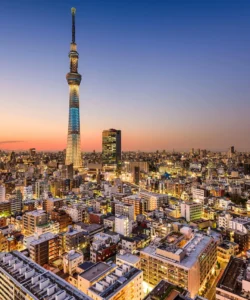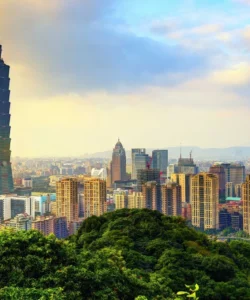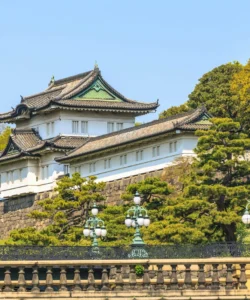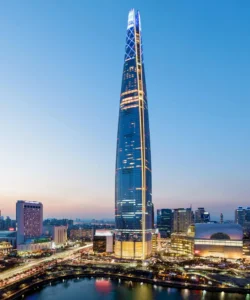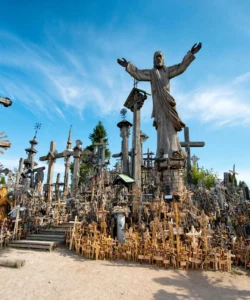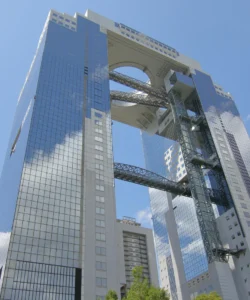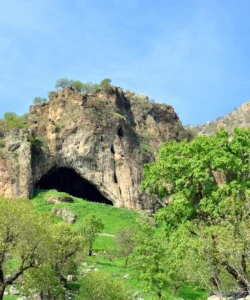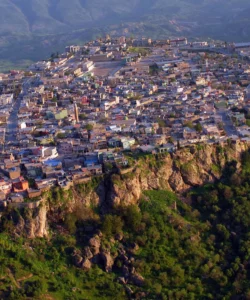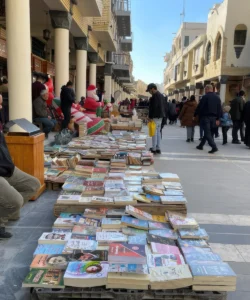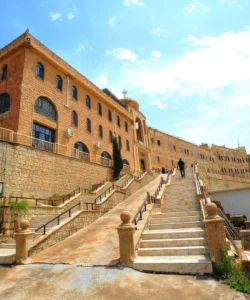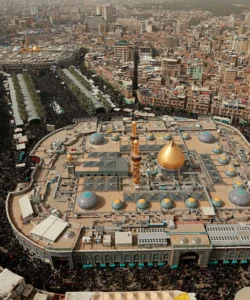Mar Mattai Monastery, also known as the Monastery of St. Matthew, is a revered Syriac Orthodox monastery perched on Mount Alfaf in northern Iraq. As one of the oldest Christian monasteries in existence, it has been a center of faith and learning for over 1,600 years and is a powerful symbol of the enduring Christian presence in Mesopotamia.
Name: Mar Mattai Monastery (Syriac: ܕܝܪܐ ܕܡܪܝ ܡܬܝ, Dayro d-Mor Mattai; Arabic: دير مار متى)
Address: The monastery is located atop Mount Alfaf, also known as Mount Maqlub, in the Nineveh Governorate of northern Iraq. It is approximately 20-38 kilometers (12-24 miles) northeast of the city of Mosul.
How to Get There:
Due to ongoing political instability and security issues in northern Iraq, travel to Mar Mattai Monastery is extremely difficult and unsafe for general tourism. The following information is for historical context and is not a recommendation for travel.
- By Air: The closest major airports are in Erbil (Hawler) and Mosul. From either city, a vehicle would be necessary to reach the monastery.
- By Road: The monastery is located in a mountainous and often contested region. Roads can be difficult to navigate, and a local guide would be essential. In more stable times, the journey from Erbil to the monastery would take a few hours.
- On-Site: The monastery is a complex of buildings and caves, and exploring it requires walking on uneven, mountainous terrain.
- Best Time to Visit: The monastery is a site of pilgrimage, particularly on September 18th, the commemoration day of Mar Mattai.
Landscape and Architecture:
The monastery’s architecture is a testament to its long history, with ancient stonework and traditional monastic design, all integrated into a dramatic natural landscape.
- Mountainous Location: The monastery is uniquely situated on a cliff face on Mount Alfaf, offering breathtaking panoramic views of the Nineveh Plains below. This strategic location provided both a sense of spiritual seclusion for the monks and a natural defense against attacks.
- Complex of Churches and Caves: The monastic complex consists of several churches, chapels, and memorials. The main church is dedicated to Mar Mattai. In addition to the main buildings, the mountain itself is dotted with numerous caves where early hermits and monks lived, giving the area the nickname “Mount of the Thousands.”
- Traditional Monastic Style: The architecture is characterized by ancient stonework, thick walls, and vaulted ceilings that have been built and rebuilt over the centuries. Some sections show signs of restoration, blending older structures with more modern annexes.
- Frescoes and Carvings: The interior of the churches features beautiful frescoes depicting biblical stories and saints, providing an immersive experience into the rich Christian heritage of the region. The monastery also contains historical inscriptions and carvings.
- Libraries and Manuscripts: Historically, Mar Mattai Monastery was famous for its magnificent library and vast collection of Syriac Christian manuscripts. While many were lost to looting and fire over the centuries, the monastery has worked to preserve the remaining priceless artifacts.
- Beth Qadishe: The monastery is also home to a burial chamber known as the “House of Saints” (Beth Qadishe), which serves as the final resting place for many saints and patriarchs of the Syriac Orthodox Church.
What Makes It Famous:
- One of the World’s Oldest Monasteries: Mar Mattai Monastery is globally famous for being one of the oldest Christian monasteries still in existence, founded in 363 AD by Mar Mattai the Hermit. Its longevity makes it a living link to the very early days of Christianity.
- Symbol of Christian Heritage in Iraq: The monastery is a powerful symbol of the rich and ancient Christian heritage of Iraq and the Middle East, particularly for the Syriac Orthodox Church. It has been a center of resistance and a refuge for local Christians for centuries.
- Historical Sanctuary: The monastery’s remote and fortified location has made it a sanctuary for monks, scholars, and a safe haven for Christians fleeing persecution. It famously provided refuge for families displaced by ISIS in 2014.
- Intellectual Hub: Historically, the monastery was a major intellectual hub, housing a significant library and a community of scholars and writers. It has been a seat of the Maphrianate of the East, a high-ranking prelate in the Syriac Orthodox Church.
- Connection to the Story of Mar Behnam: The monastery’s founding legend is intertwined with the story of Mar Behnam, a prince of the Assyrian King Sennacherib, who, along with his sister Sarah, was converted to Christianity by Mar Mattai. This story adds a layer of spiritual and cultural significance to the site.
Differences from Some Other Wonders:
- Ancient and Living Religious Site: Unlike ancient ruins like Hatra or Ashur, which are no longer active places of worship, Mar Mattai Monastery is a living, active religious site. A small community of monks continues to reside there, maintaining a centuries-old tradition.
- Focus on a Specific Religious Community: Its fame is tied to its profound significance for the Syriac Orthodox Church, a specific denomination of Christianity with a unique history and traditions. This is different from sites of broader historical or religious significance to multiple faiths.
- Resilience in Modern Conflict: The monastery’s story is one of not only ancient survival but also modern resilience. Its role in providing refuge during the ISIS conflict adds a poignant and relevant chapter to its long history, a narrative that distinguishes it from sites that have been less affected by recent conflict.
- Natural and Built Integration: The monastery’s unique architectural integration with the natural landscape of Mount Alfaf, with its blend of built structures and caves used by hermits, is a key feature.
- Lesser-Known but Profound: While not as famous as Babylon or Ur, the monastery’s fame is more specialized and profound within a specific religious and historical context, highlighting the depth of Christian heritage in the Middle East.
Mar Mattai Monastery Photos:































